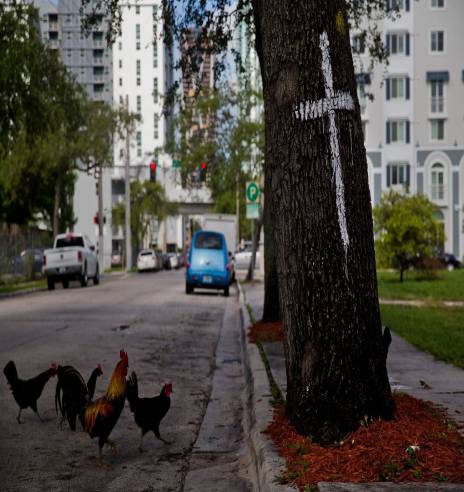The Trump administration announced an ambitious program Thursday to reduce deaths from opioid overdoses by 40 percent over three years in hard-hit communities across several states.
The $353 million effort will test the idea that the best approaches to combat the drug crisis are well known but poorly implemented and coordinated. It will employ a comprehensive strategy in each community that encourages the involvement of doctors, treatment providers, law enforcement, courts, churches and even housing providers — an approach that has worked in a few places.
Critics have long complained, for example, that even the small portion of substance abusers who are able to find treatment often are abandoned when they seek jobs, housing or continued counseling and social support. Those problems are among the many factors that lead to repeated relapses.
Health and Human Services Secretary Alex Azar suggested instead a system under which an arrested user might be handed off from police to a drug court to treatment and then to agencies that provide housing, counseling and other support.
“We don’t have to be intimidated by the scope and scale of this challenge,” Azar said at a news conference Thursday. “We can do it now.”
The money will come from the National Institutes of Health’s Helping to End Addiction Long-term initiative and will go to the University of Kentucky ($87 million); Boston Medical Center ($89 million); Columbia University ($86 million) and Ohio State University ($65.9 million). Each university will work with at least 15 towns or counties in its state to design programs and assess how well they work.
RTI International, a nonprofit research institute in North Carolina, was awarded $25.5 million to pool and coordinate data generated for the research.
Opioid overdoses killed 47,600 people in 2017, with illegal fentanyl now the main driver of the worst drug crisis in U.S. history. More than 400,000 people have succumbed to overdoses to prescription narcotics, heroin and fentanyl since 1999. More than 2 million Americans have an opioid use disorder.
Governments and private groups have finally begun to address the many facets of the epidemic, by distributing the overdose antidote naloxone, tightening restrictions on painkiller prescriptions and curbing the import of fentanyl from abroad.
But even now, it remains difficult for users to find medically assisted treatment with buprenorphine, methadone or naltrexone, which control cravings and are the accepted standard of care. The National Academy of Sciences concluded last month that most people with an opioid use disorder receive no treatment at all, and only a fraction of those who do have access to those drugs.
Dayton, Ohio, which had one of the highest overdose death rates in the country in 2017, has been cited as a place where increased access to treatment and more support for users led to a sharp decline in fatalities in 2018.
At Thursday’s news conference, Alex Elswick, 28, a recovering heroin addict, described his journey to sobriety, one that included homelessness in places such as Dayton, jail and five inpatient treatment programs.
Elswick, who said he did not use medically assisted treatment, is now working toward a doctoral degree at the University of Kentucky. He said he “barely made it out alive,” relapsing often, in part because of the lack of support each time he was able to give up drugs.
At age 28, he said, “I’ve been to more funerals than weddings. That’s not the way the family life cycle is supposed to go.”
